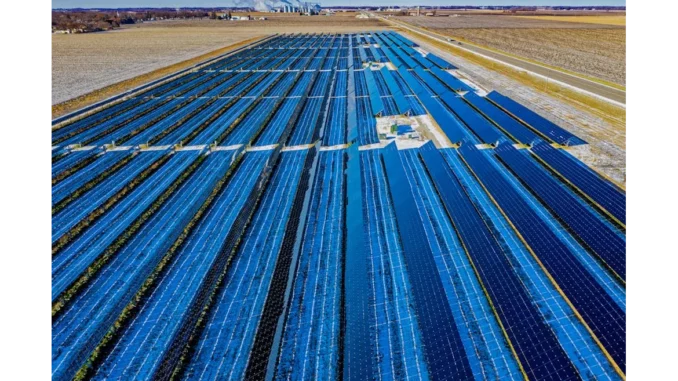
Upon first hearing of the pioneering research at Oxford University’s Physics Department, I was immediately captivated. The concept of a novel material capable of being applied to virtually any building surface to generate power seemed almost fantastical. To delve deeper into this remarkable innovation, I engaged in a conversation with Dr. Emily Harding, a principal researcher on this transformative project. Her revelations were nothing short of extraordinary.
Focus360 Energy: property compliance services – pre-planning to post-construction. Learn more.
Dr. Harding welcomed me with a warm smile and a firm handshake as we settled into a secluded corner of her laboratory, surrounded by state-of-the-art equipment and the quiet hum of ongoing experiments. “We are on the cusp of a new era in sustainable energy,” she began, her eyes gleaming with enthusiasm. “The material we’ve developed is not merely a scientific milestone; it has the potential to fundamentally alter our approach to energy utilisation in everyday life.”
The material in question is a type of photovoltaic film, but it surpasses traditional solar panels in flexibility and efficiency. “The elegance of our material,” Dr. Harding elucidated, “lies in its ability to be applied to almost any surface. Whether it’s the exterior of a skyscraper, the roof of a suburban home, or even the hull of a ship, our coating can convert these surfaces into power-generating assets.”
One of the most compelling attributes of this new material is its versatility. Dr. Harding described how it could be seamlessly integrated into existing structures without necessitating extensive modifications. “Picture retrofitting old buildings with this coating,” she said, her excitement palpable. “We could transform entire cities into power stations, significantly reducing our dependence on fossil fuels and curbing greenhouse gas emissions.”
As she spoke, it became evident that the potential applications of this technology are vast. “We are already in discussions with several urban planners and architects,” Dr. Harding disclosed. “They are keen to incorporate our material into their designs, which could revolutionise urban development.”
However, the path to this breakthrough was fraught with challenges. Dr. Harding recounted the years of research and experimentation that culminated in the development of the material. “There were moments when we encountered obstacles and had to revisit our approach,” she admitted. “But each setback only fortified our resolve. The support from the university and our collaborators was instrumental in keeping us motivated and on course.”
One significant challenge was ensuring the material’s durability and longevity. “We aimed to create something resilient enough to withstand environmental conditions while maintaining efficiency,” Dr. Harding explained. “Through rigorous testing and refinement, we developed a coating that not only generates power but also endures various environmental stresses.”
During our conversation, I couldn’t help but ponder the real-world implications of this technology. Dr. Harding shared details of pilot projects already in progress. “We are currently testing the material on several buildings around Oxford,” she said. “The initial results are incredibly promising, with substantial energy output even under less-than-ideal weather conditions.”
She also highlighted the environmental impact of the material. “One of our primary objectives was to create an eco-friendly product from inception to application,” Dr. Harding noted. “Our coating’s production process uses fewer resources and generates less waste compared to traditional solar panels. Furthermore, the energy it produces is entirely clean and renewable.”
The economic advantages of this technology are equally noteworthy. “By reducing energy production costs and enhancing efficiency, our material has the potential to lower energy bills for consumers,” Dr. Harding explained. “This could significantly benefit families and businesses, especially in regions where energy costs are a substantial burden.”
As our interview concluded, Dr. Harding’s passion for her work was unmistakable. “We are merely at the beginning,” she said with a smile. “The possibilities for this technology are boundless, and we are committed to exploring every avenue to ensure it realises its full potential.”
Leaving the lab, I was struck by the prevailing sense of optimism and innovation. The work being undertaken by Dr. Harding and her team at Oxford University epitomises the power of human ingenuity and the relentless pursuit of a better future. Amid the pressing challenges of climate change and energy sustainability, it is heartening to know that brilliant minds like Dr. Harding’s are diligently working on solutions that could profoundly transform our world for the better.


Be the first to comment